
Primarily nocturnal, a pest of warm environments but tolerant of colder conditions. Nymphs and adults cluster in groups in harbourages when inactive attracted by aggregation pheromone. Forage on wide range of foods but need access to free water. Found indoors in heated buildings, underground heating ducts and also in drains, refuse tips and outdoors near buildings. May even survive winter outside in protected environments but will not breed below 10°C. Climbs rough surfaces and may reach upper floors via vertical ducts, lifts. Does not tolerate extremely hot and dry conditions.
Egg - nymph - adult. Eggs - in ootheca (case) about 5 per female each containing average 16 eggs, laid at intervals. Deposited when fully formed in harbourage. Incubation period 6-12 weeks, longer if cool. Nymph - 7-10 moults taking from 6-18 months to reach maturity. Live and feed with adults. Adults - dark brown/black, robust living up to 6 months. Partial wings or wing buds, incapable of flight.
Serious pest in heated buildings such as hotels, laundries, institutions and multi-occupation dwellings, particularly in large urban areas. Can carry disease organisms.
Application of residual insecticide to all known harbourages, flooring, walls, cracks and crevices etc. Only to be undertaken by qualified technicians.
A cockroach has the ability to survive having its head decapitated. It can remain alive an average of 2 weeks or even longer. Eventually it will die due to dehydration.

NORWAY BROWN RAT Rat of the developed urban environment, largely in developed towns and cities. Generally a burrowing species but can be found in buildings and...
Read More
HOUSE MOUSECommon in a wide range of urban and rural buildings all over UK. Mainly a house dweller, it lives very little out of doors where it does not compete well with...
Read More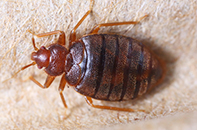
BED BUGNocturnal parasite, all stages feeding on mammalian blood, principally human but also dog, cat or rodents. Hide by day in crevices in beds...
Read More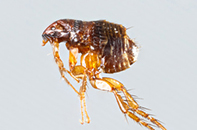
FLEAParasitic as adults, adapted to living among the fur of the host and feeding on its blood. Soft furnishing. Larvae live on floor in bedding of host...
Read More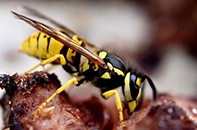
COMMON WASPTemperate species forming nests in soil banks, roof spaces, wall cavities and trees. Nests formed of paper (chewed wood) and may become very large....
Read More
EUROPEAN HORNETTemperate species forming nests in wooded areas, wall cavities and trees. Nests formed of paper (chewed wood) and become very large. Colonies only....
Read More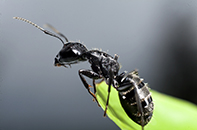
BLACK ANTTemperate species living in soil or in association with dwellings. Form nests in gardens, under paving stones, in foundations or occasionally within...
Read More
PHARAOH'S ANTTropical species found only in heated buildings in the UK. Small, mobile and active at all times of the day. Form large, apparently unstructured, nests in....
Read More
GERMAN COCKROACHPrimarily nocturnal, a pest of warm, humid conditions. Found in the UK only in heated buildings, not normally outside or in underground...
Read More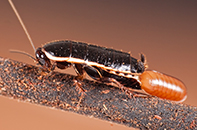
ORIENTAL COCKROACHPrimarily nocturnal, a pest of warm environments but tolerant of colder conditions. Nymphs and adults cluster in groups in harbourages...
Read More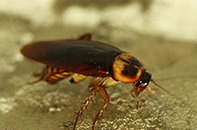
AMERICAN COCKROACHPrimarily nocturnal, a pest of warm, humid conditions. Found in the UK only in heated buildings, not normally outside or in underground heating...
Read More
CLUSTER FLYAdults live harmlessly out doors during summer but may enter buildings (usually roof spaces and lofts but also through windows into rooms) in autumn....
Read More